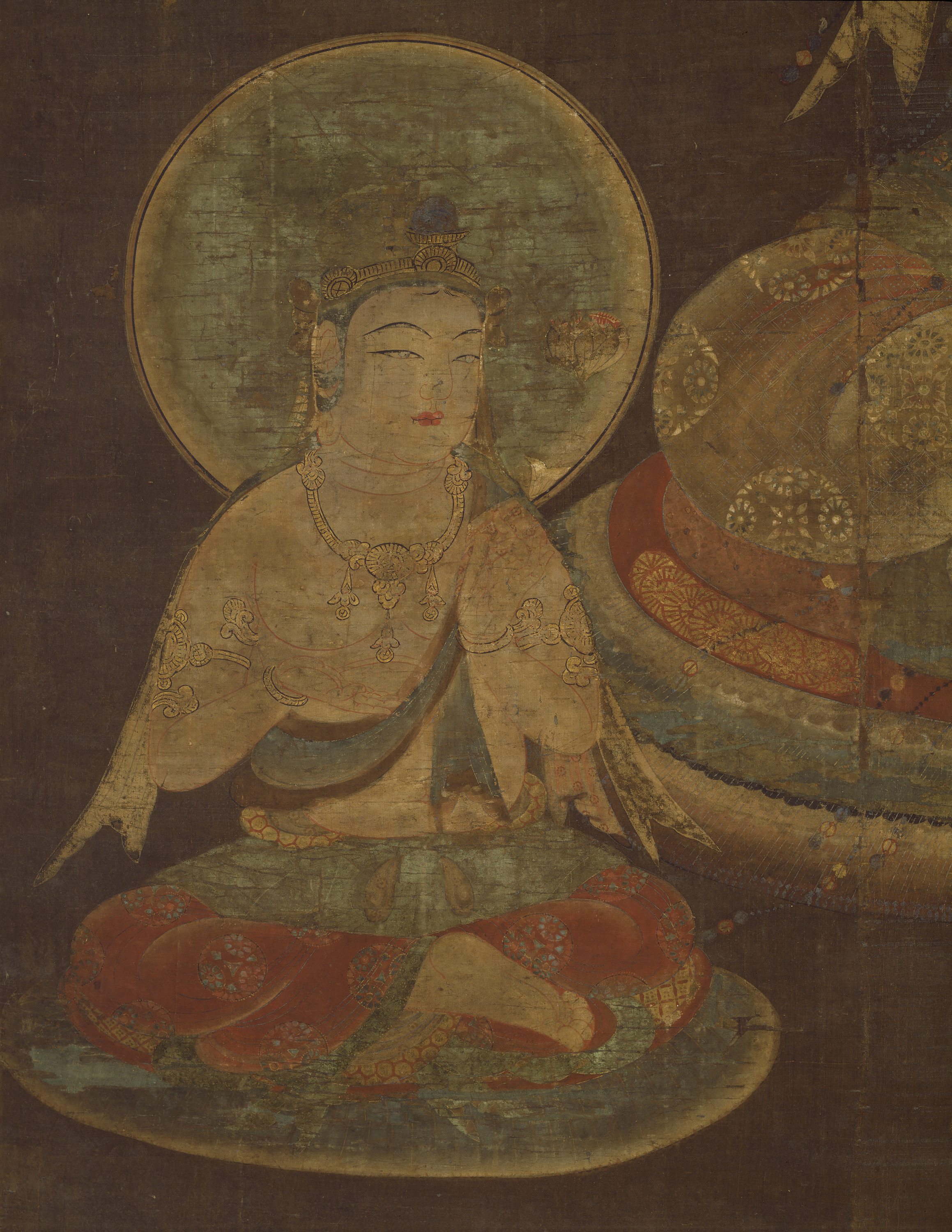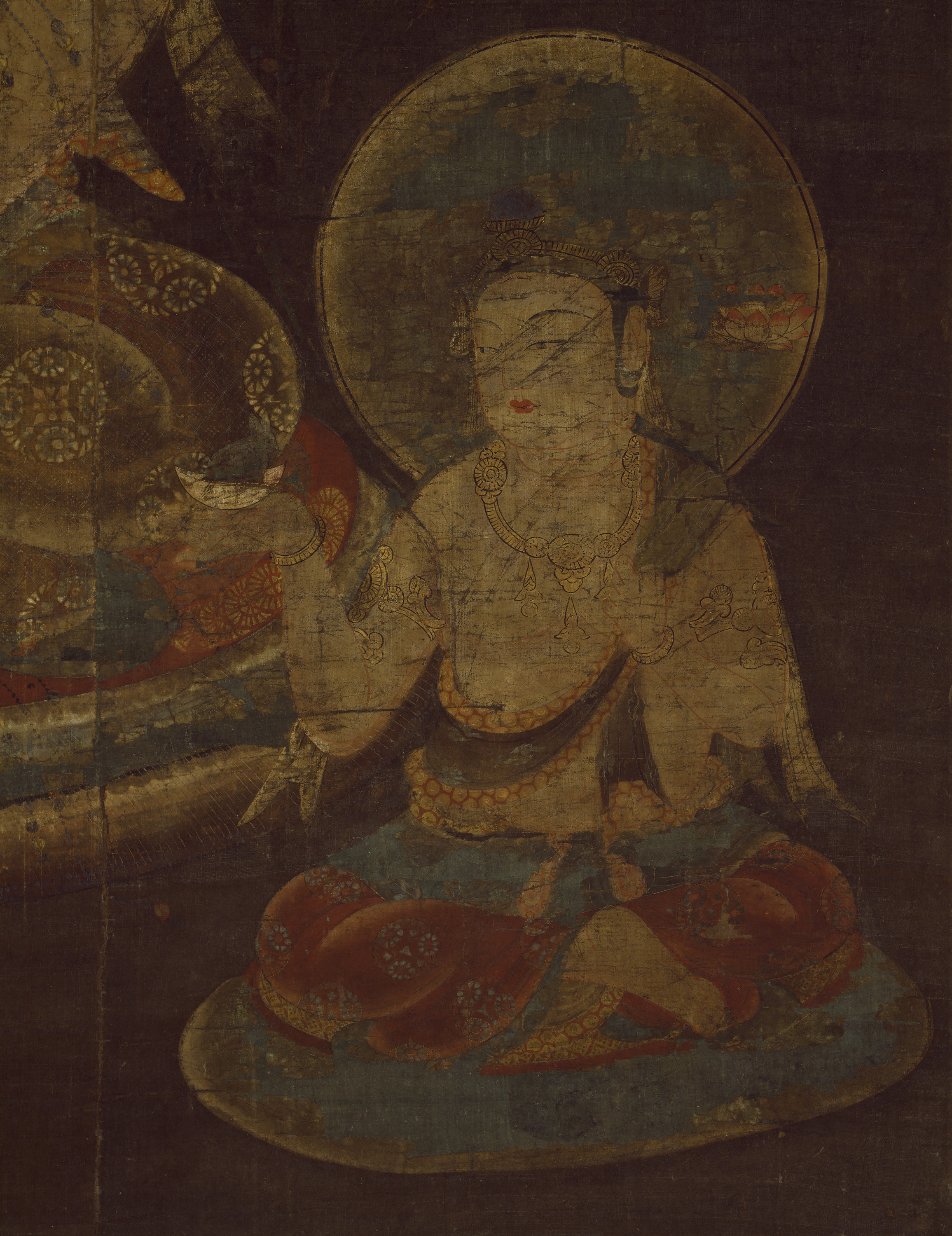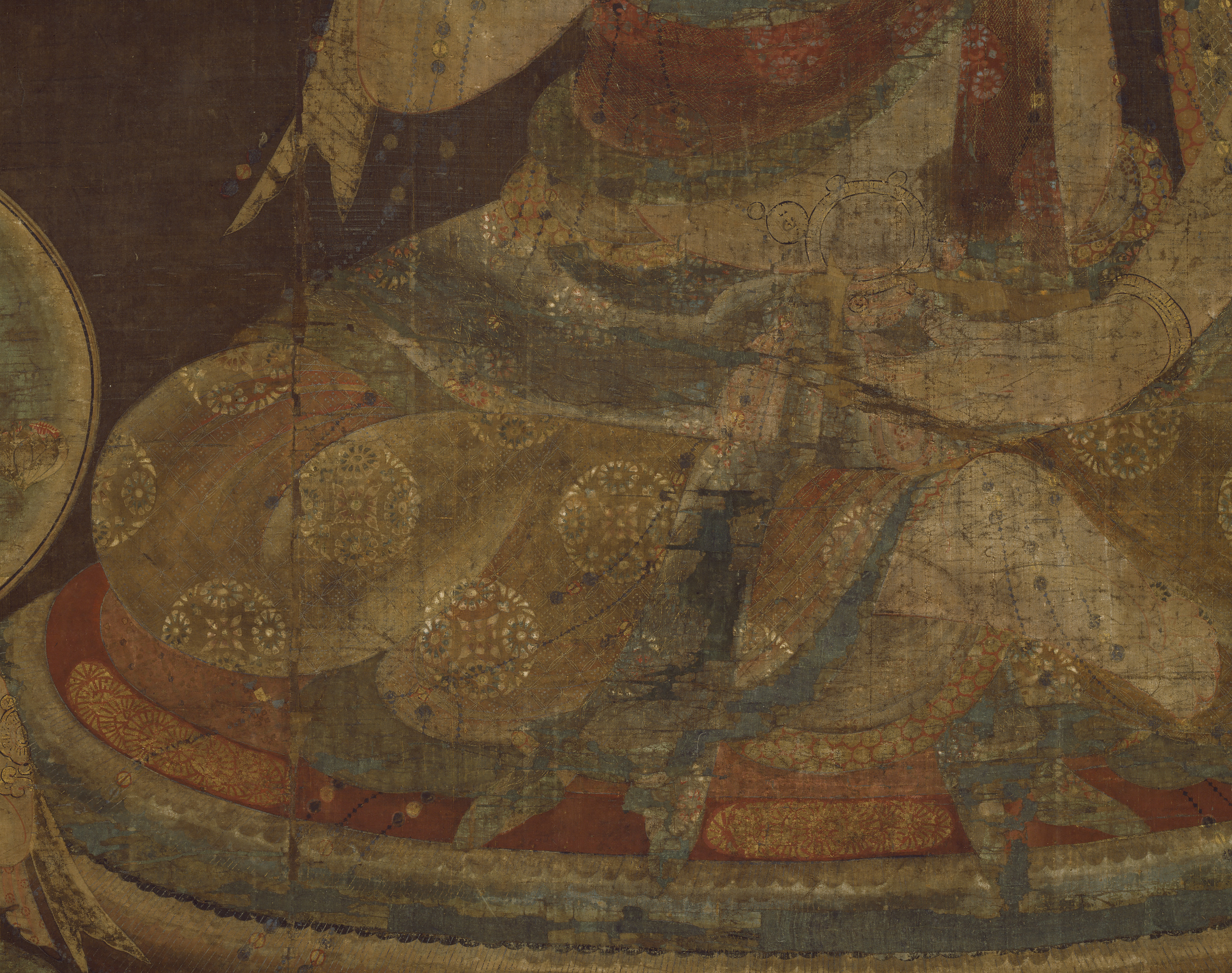- TOP
- Gatten (Candra)
Overview
National Treasure
Gatten (Candra)
- Museum No.
- AK283-1
Showing 1-6 of 4
| Title | Gatten (Candra) |
|---|---|
| Designation | National Treasure |
| Artist | |
| Category | Painting(A), Buddhist Painting, Esoteric Buddhist Painting |
| Country | Japan |
| Period | Heian Late |
| Century | 12th |
| Year | 1127 |
| Quantity | |
| Materials | |
| Dimensions | Height 144cm Width 127cm |
| Inscription by | |
| Signature/Seals Etc | |
| Donor |
Included Works
 Twelve Devas
Twelve Devas
AK283 Nitten (Surya)
Nitten (Surya)
AK283-2 Fu-ten (Vayu)
Fu-ten (Vayu)
AK283-3 Sui-ten (Varuna)
Sui-ten (Varuna)
AK283-4 Rasatsuten (Saksasa, Nairrti)
Rasatsuten (Saksasa, Nairrti)
AK283-5 Enma-ten (Yama)
Enma-ten (Yama)
AK283-6 Ka-ten (Agni)
Ka-ten (Agni)
AK283-7 Taishaku-ten (Indra)
Taishaku-ten (Indra)
AK283-8 Ishana-ten (Isana)
Ishana-ten (Isana)
AK283-9 Bishamon-ten (Vaisravana)
Bishamon-ten (Vaisravana)
AK283-10 Bon-ten (Brahman)
Bon-ten (Brahman)
AK283-11 Ji-ten (Prthivi)
Ji-ten (Prthivi)
AK283-12
This object may be one within a set or the title of a set. To see all objects in the set, perform a Category Search by the Museum Number below, entering numerals only before the hyphen.













Gatten, the moon god, is called Candra in Sanskrit. Here, he appears in the form of a bodhisattva. Originally, he was an Indian god, but was adopted as one of the Twelve Deities (Skt., devas) of Esoteric Buddhism (J., Mikkyô) and came to be a Buddhist guardian. This image was painted in 1127 (Daiji 2) for the Goshichinichi-no-mishiho ("Austerities after the seventh day") ceremony held every New Year's at the Shingon-in Hall on the grounds of the Imperial Palace, in prayer for the peace of the nation. One of the characteristics of this painting is that the deity sits on a felt-covered pedestal. In this scroll, the attendant on the deity's left holds a half moon with a rabbit. In other versions, Gatten himself holds a moon in the palm of his hand or rides on a white goose.
Japan-Heian-Late